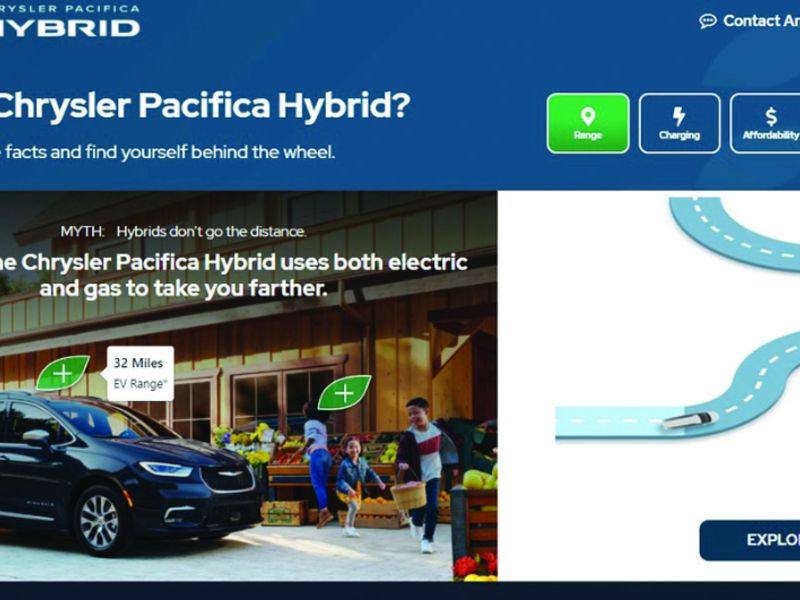
CHICAGO — In a world where shopping for electrified vehicles can be confusing, Chrysler has created a website to promote the benefits of its Pacifica Hybrid in simple ways.
The automaker uses everyday items to help people understand how long the lithium ion battery will last.
The microsite, whypacificahybrid.com, says the plug-in minivan’s battery could outlive a couch, laptop computer, microwave, pool liner or clothes dryer. The same page informs consumers that the Pacifica’s battery can be recharged thousands of times and has a 10-year/150,000-mile battery warranty.
The site, launched this month, aims to dispel myths around EVs while making the pitch for the Pacifica Hybrid as Stellantis moves to electrify 98 percent of its lineup by 2025.
“There’s a lot of different technology, so it’s good to be able to have the site that answers questions,” Josh Culbert, a product manager for Stellantis, told Automotive News at the Chicago Auto Show. “One of the cool things about the site is that it actually has a live concierge, so if you want to chat, or even have a phone call about a particular question you may have, that’s available on the site.”
The Pacifica Hybrid, introduced in 2016, was the first hybrid minivan in the U.S. Five years later, it remains the only plug-in option in the segment, although Toyota’s Sienna is now sold only as a hybrid.
The Pacifica site tackles the myth that people need a high-voltage charger at their homes, pointing out that owners can plug their vehicles into a standard 120-volt wall outlet with the Level 1 charging cord that comes with the van.
Another myth is that “hybrids are expensive,” the site says, while highlighting the available federal $7,500 tax credit along with potential credits at the local and state levels.
The site makes clear that the Pacifica Hybrid, with 32 miles of electric- only range, automatically switches between electricity and gas for a combined driving range of 520 miles.
Explaining the Pacifica’s capabilities with the help of relatable, everyday items should make the concepts easier to understand, Culbert said.
“I think those examples definitely help take the context of the battery and the vehicle itself,” Culbert said, “and just break it down in a way that is more friendly for the average consumer that may not be as well-researched in hybrid technology.”

